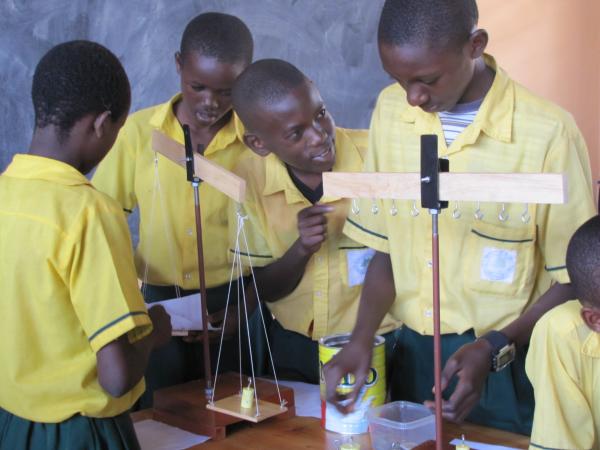Students come in all sizes, shapes, and levels of emotional and intellectual development. A few of the generalities that you need to know, even if you're working primarily with teachers, are outlined here.
Children younger than 10-12 years of age base their social values and find their primary security in their family. As they approach puberty, they not only change physically, but also socially ard emotionally. Their peer group becomes increasingly significant in their lives at the expense of family, and they begin to question values and try on new behaviors (some of which seem pretty strange and others of which are genuinely dangerous). This is a natural stage in their learning to interact with and function in society and establish their own value systems (which most frequently turn out to be pretty similar to those of their parents). Nonetheless, it is a time of great emotional upheaval for many children and parents alike. For some it settles down by age 15, for others it goes on into their 20s. There's not much that can be done to avoid it , it is just something that young people and their parents have to live through, and educators and youth workers have to accommodate, Don't overeact!
Changes in intellectual development also occur with age. Virtually aIl elementary school children ate concrete thinkers - they think in relatively simple terms about what they can see, touch and detect with their other sense. As they mature, most children make the transition to abstract thinking, where they can generate, proiect into the future, and deal with less tangible issues. Some people make this intellectual transition around age 11-14, but for many it doesn't occur until they are 15-20. In working with elementary school children, it is essential to be as concrete as possible. Even with high schoolers, it's best to start out with concrete issues and examples and progress to geater levels of abstraction depending on the demonstrated abilities of the students involved. For example, a concrete way to represent the effects of water on plant growth is to have plants of varying heights and graduated cylinders filled to show how much water each had received arranged together on a table in order of increasing height. One level of abstraction would be to have pictures, rather than real plants and water. Progressively higher levels of abstraction would be to have numerical data, a graph of the data, and an equation representing the effect of water amount on plant growth.
Decline in interest in science and the development of negative attitudes towards it typically occurs between the third and eighth grades. These are the critical years for inspiring interest, building basic skills, and avoiding premature burning of bridges. High school is the time to begin focusing more on specific content and future career options. Applications and hands on activities are the keys to generating interest and promoting learning!
The traditional approach of teaching theory first and applications later is fundamentally unmotivational. Applications that are interesting and relevant to students, as opposed to things that you and your professional peers find interesting, provide the hook to stimulate interest in principles. If you or a teacher wants to arouse student’s interest, start with an exciting activity or demonstration. ln addition, progams in which the students are involved in doing hands on activities are far superior to those in which adults merely show them things of, worse yet, just talk to them. And hands on activities in which students disccover things for themselves are the highest quality learning experiences. Students forget most of the things their teachers tell them. But when adults lead young people in experiences where they wrestle with an interesting personal observation and then figure it out “by themselves" - those things are remembered forever. Seek to be more of a guide to discovery than a conveyor of information and a provider of answers.
Students exhibit a variety of different learning styles. Some learn science well by listening or reading (auditory and print-oriented leamers). They typically do well in our traditional education system. Others learn more effectively by seeing things work (visual leamers), by being physically involved in games or activities which simulate scientific phenomena (kinesthetic leamers), or by solving problems in groups (group interactive leamers). The best learning experiences are those that involve a variety of (ideally all)l leaming modalities, Don’t get caught in the trap of thinking that, just because you are a print-oriented learner, anyone who really wants to can learn just by reading books.
Science process is at least as importart as science content. Students need to be immersed in examining information, developing hypotheses, proposing critical experiments, making observations, collecting data, testing ideas, and developing logical conclusions. These elements should be woven into every content area, If students fail to develop these scientific "habits of the mind" they will become adults whose decisions and positions will be easily swayed by slick advertising or emotional appeals.
An increasing number ol children are carrying a lot ol heavy personal baggage with them. Things like family disputes and breakups, substance abuse (by either themselves or their family members), families witl little commiment to the importance of education, inadequate or improper food, clothing, or parental support, self-doubts, and the need to impress peers (particularly in the middle school years) weigh heavily on far more youngsters than you might like to believe. Sensitivity to such problems is a valuable asset.

